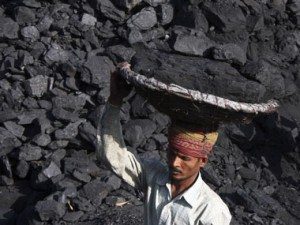The recently released report by the Institute of Public Affairs (IPA) loudly claims that increasing coal imports from Australia to energy starved India is a worthy cause. It argues that the supply of Australian coal to India will allow at least 82 million Indian people each year to access regular and reliable source of electricity.
Recent trends and evidence in India strongly refute these assertions.
Rural electrification is the missing link in India’s inclusive development story. The current government has placed energy security on the highest priority with a pledge to provide all Indians with reliable electricity before the next elections in 2019, with solar power playing a major role.
The government is sprouting wings to bring in long-term policies and schemes for an unprecedented expansion in renewable energy projects. It has recently announced revision of the target of renewable energy capacity to 175 GW by 2022,which comprises additional capacity addition of 100GW solar, 60GW wind, 10GW biomass and 5GW small hydro.
Such a highly ambitious goal on renewable energy almost immediately lends itself to globally available technology and know-how, which if transformational, can bring about the desired change by moving away from the path of thermal electricity that India has relied on for decades, and kept the dream of modern electricity service elusive for millions.
In the past, the governments’ flagship village electrification scheme has helped achieve a household electrification level of the order of 75%, yet the sight of electricity poles but no electricity is all too common across the country.
Not surprisingly, the rural energy demand itself is just one-third of the average consumption in urban areas. Statistics show that the highest rural demand and lowest urban demand are almost equal, as shown in the diagram below. The point, then, is that while vast unmet energy needs remain, the amount of energy required by the rural, primarily agrarian India is vastly different, and on per capita basis, less than the requirement of energy by urban India.

Past data also clearly shows that doubling of thermal generation capacity over the last decade, has electrified a mere additional 8 – 10 percent of rural households, thereby failing miserably to meet the targets of providing energy to the poor. The reasons are not hard to fathom.
The centralised power supply model, where the cost of supplying power to rural areas is high and increases with distance from the grid, is increasinly making rural electrification difficult and uneconomical. At least 50000 villages out of a total of 550000 villages in the country will always be too remote to connect to the grid at reasonable cost. What is required then is demand-driven electrification that can be tailored to the local needs and scaled as per local requirements.
The pattern of household electrification rates across the country reveals that the coal-rich states, considered to be India’s electricity ‘hub’, are still in the dark and suffering from abject poverty.
The states where there is more concentration of coal power plants also have the lowest rates of household electrification in the country, and lower standards of living by extrapolation. The installation and operation of coal power plants evidently does not go hand in hand with wealth creation and wealth most certainly does not ‘trickle down’.
The conventional belief that electricity generated from coal is cheap is highly questionable, globally and in India.
Firstly, it is becoming increasingly vital to factor all the externalities associated with coal, such as air pollution, land degradation and depletion and pollution of water, which is now leading to a reassessment of the economics of coal power.
Second, policymakers are waking up to the fact that India’s coal reserves, though huge, are likely insufficient to meet the growing demands of electricity generation. India’s continued reliance on coal will necessitate the import of significant quantities of coal at high and volatile prices, and disrupt its balance of payments, which the country can ill-afford.
Thirdly, the high cost (environmental and social) of already heavily subsidised fossil fuel powered electricity is making this centralised power supply model far more difficult and economically unviable.
Decentralised renewable energy systems will be the game changer for India.
For example, off- grid solar or mini-grids in remote areas where last mile grid connectivity will continue to remain a challenge in the future, are not just able to provide clean and adequate power to the rural poor, they also customize the power requirement based on the specific needs of the rural population.
Additionally, the provision of good quality electricity helps such population climb the social ladder through better livelihood opportunities, greater women’s empowerment and higher education standards for children and the youth. A simple decentralized system installed in a village is a break-through in more ways than one. Clearly renewable energy is the superior option for the rural poor, for all the reasons argued above.
India urgently needs scaling up of such ‘leap-frog’ technology in clean renewable energy, where the barriers are not so much technology and finance, as much as they are about political will.
In previous years, while there have been official targets for providing 24X7 electricity, and genuine political intentions to meet them; it is the pathways to achieving energy access that need a breath a fresh air and rethinking.
It is encouraging that PM Modi has been an avid proponent of renewable energy, and as the Chief Minister of Gujarat foresaw the development of India’s largest solar park of 1000MW.
With his personal interest and ability to generate high political will, there is high hope that India can embark on the low carbon pathways, scale up renewables and make a strong global case for meeting development needs while also cleaning its energy supply.
The questionable arguments put forward by the IPA, that Australian coal will lift India’s poor out of poverty, simply do not stand up to even the most basic scrutiny.
Srinivas Krishnaswamy is CEO of the Vasudha Foundation (New Delhi)










